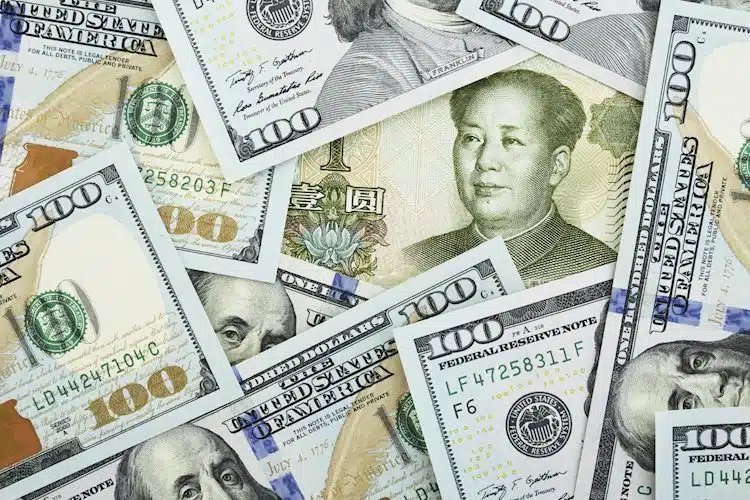In recent trade today, the People’s Bank of China (PBOC) set the yuan at 6.8987, representing a significant shift when compared to the previous fix of 6.8731 and the prior close of 6.8851. China is known for maintaining strict control of the yuan’s rate on the mainland. This has led the onshore yuan (CNY) to differ from the offshore one (CNH) in trading restrictions, as the offshore yuan is not as tightly controlled.
Each morning, the People’s Bank of China determines the daily midpoint fix of the yuan. This is based on its previous day’s closing level and quotations taken from the inter-bank dealer. It is essential to understand the yuan’s daily midpoint fix, especially when studying international business and foreign exchange markets. This rate is critical for individuals and companies that need to move money in or out of China.
It is important to note the difference between the onshore yuan (CNY) and the offshore yuan (CNH). The onshore yuan is the currency used within mainland China, and it is tightly regulated by the Chinese government. It cannot be freely exchanged and has limited convertibility, meaning it can only be used for a limited set of transactions.
In contrast, the offshore yuan (CNH) is used outside of mainland China, especially in Hong Kong, where the market dictates the value of the currency. The offshore yuan is freely convertible but has a different exchange rate from the onshore yuan. The CNH is actively traded by both domestic and international investors, and its value is determined through supply and demand in the global market without significant interference from the Chinese government.
While this arrangement may seem confusing, it is essential to remember that the Chinese government uses these different exchange rates to control the value of the yuan, protecting the country’s industries and economy from sudden shifts in the value of foreign currencies. While China’s onshore yuan has been appreciating against the US dollar in recent years, the offshore yuan value experienced a depreciation. This dual currency policy allows the Chinese government to maintain control over its currency while also benefiting from the global market in a way that serves Chinese economic interests.
The PBOC’s daily midpoint fix is an important aspect of China’s efforts to maintain its currency stability, which is essential for its economic development. By closely managing the value of the onshore yuan, China can maintain a steadier and less volatile exchange rate than if it allowed the currency to float freely. This is crucial for businesses, individual investors, and the overall health of China’s economy. Stability in the exchange rate also encourages foreign investment into the country and helps to maintain the value of the onshore yuan.
However, it should be noted that this tight control of the onshore yuan has its drawbacks as well. The restrictions on converting the onshore yuan can create challenges for foreign investors and limit the free flow of capital in and out of the country. This can lead to both inefficiencies and opportunities, as the tightly controlled onshore yuan can sometimes offer investors the chance to take advantage of discrepancies in the value of the currency between the onshore and offshore market.
In conclusion, the daily midpoint fix set by the People’s Bank of China is essential for understanding the dynamics of China’s currency market, and it plays a crucial role in determining the value of the onshore and offshore yuan. It allows the Chinese government to maintain a degree of control over its currency, which is essential for protecting the country’s economy from potential shocks and promoting stability in the exchange rate. However, this control can also have downsides, as it can lead to inefficiencies and restrictions for foreign investors looking to access the Chinese market.
As the world’s second-largest economy, China certainly holds considerable influence over global financial markets, and its currency policies will continue to be a topic of interest for investors and analysts worldwide. The daily midpoint fix determined by the PBOC will continue to play a vital role in the international business and foreign exchange markets, and for those moving money in or out of China.


